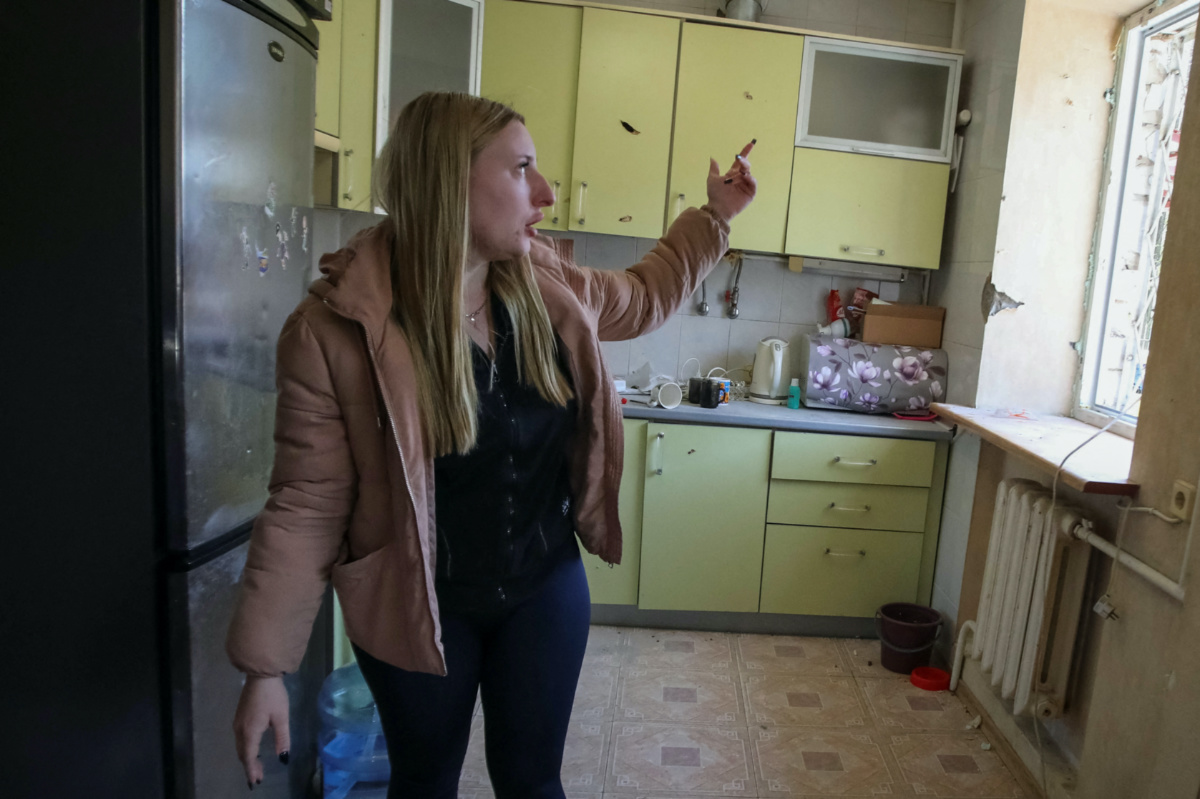
TOM BALMFORTH, of Reuters, reports…
Kharkiv, Ukraine
Reuters
Kateryna Velnychuk was having an afternoon nap when an explosion shattered the windows of her ground-floor flat, spraying shrapnel that tore holes through her walls and cupboards.
A Russian guided bomb had exploded in the courtyard outside the five-storey Soviet-era building, killing a postman on his rounds. As her flat filled with thick, milky smoke, the 22-year-old turned to see blood pouring from her boyfriend Vladyslav’s head.
“As we’ve been living…in a state of war, there was no sense of fear in the moment,” Velnychuk said. “You just understand there was an explosion. The only thought in your head is ‘I hope we survive’.”

Local resident Kateryna Velnychuk, 22-years-old, shows her apartment damaged by a Russian military strike on 27th March, amid Russia’s attack on Ukraine, in Kharkiv, Ukraine, on 8th April, 2024. RPICTURE: Reuters/Vyacheslav Madiyevskyy
As Russia has intensified its air campaign against Ukraine in the last month, hammering its energy infrastructure and urban areas, no major city has been harder hit than Kharkiv.
Just 30 kilometres from the Russian border in north-east Ukraine, Kharkiv was already the most exposed to missile attacks and bombardment.
“We have a catastrophic shortage of air defence systems. Not only in the Kharkiv region, but throughout the entire country. Especially in the Kharkiv region.”
– Governor Oleh Synehubov.
But the drying up of Western military support in recent months – as a vital US military aid package has been stuck in Congress amid Republican resistance – has left Kharkiv even more dangerously unprotected.
“We have a catastrophic shortage of air defence systems,” Governor Oleh Synehubov told Reuters, standing in the city’s vast central plaza, Freedom Square. “Not only in the Kharkiv region, but throughout the entire country. Especially in the Kharkiv region.”
The city is so near the border that Russian missiles can reach their target in less than a minute. The deployment of Ukraine’s precious air defences, such as the US-made Patriot surface-to-air missile systems, which are high-value targets for Russian airstrikes, has to be done more cautiously so close to enemy lines, officials say.
Ukrainian President Volodymyr Zelenskiy, who has urgently appealed for more air defence supplies from the West, said this week that almost a quarter of Kharkiv had been destroyed.
He accused Russia of seeking to reduce the city – which was home to 2 million people before the war – to rubble, clearing the way for its troops to advance. He said Ukraine’s military would repel any such offensive.
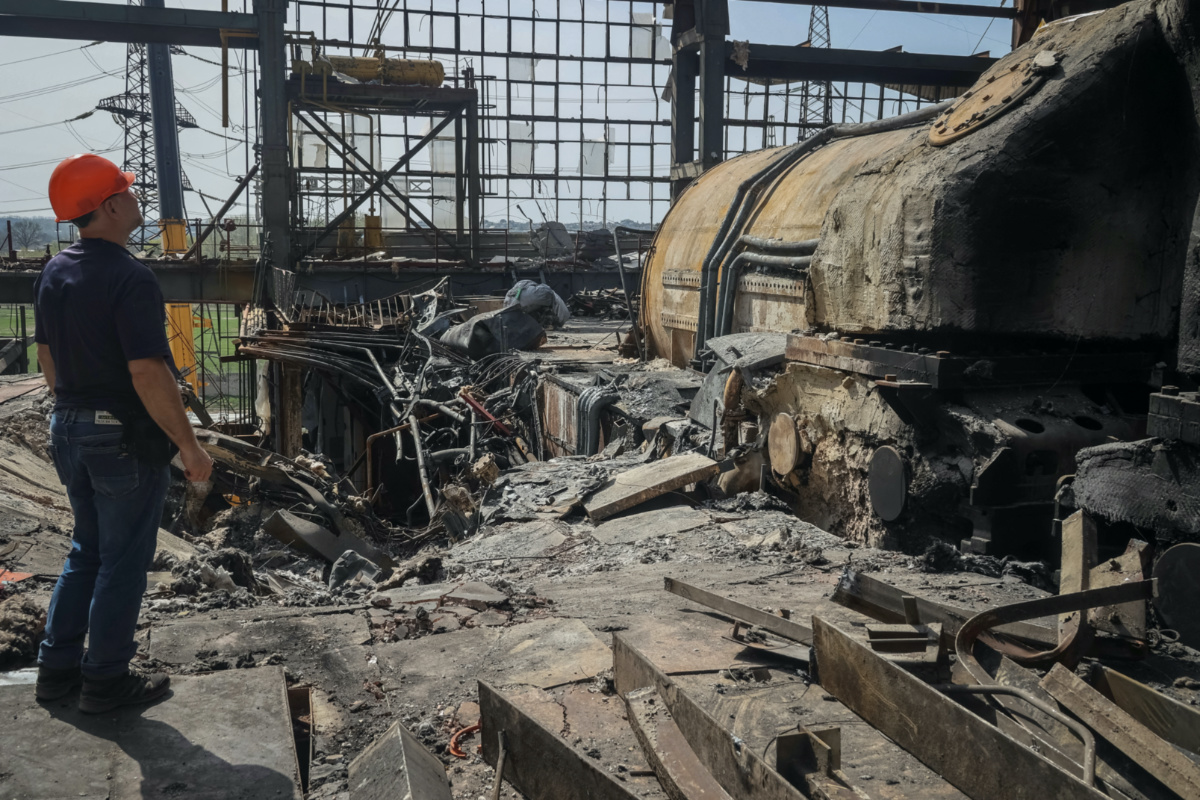
An employee of a critical power infrastructure installation, which was recently hit during Russia’s missile strike, appears on site of its damaged part, amid Russia’s attack on Ukraine, in Kharkiv, Ukraine, on 11th April, 2024. PICTURE: Reuters/Vyacheslav Madiyevskyy
The bombardments come as the momentum on the battlefield has shifted in Russia’s favour, more than two years since it launched its Feb. 2022 invasion.
Russia denies targeting civilians and says Ukraine’s energy system is a legitimate military target. The Russian defence ministry did not immediately respond to a request for comment for this story.
Reuters interviewed 15 civilians in Kharkiv who expressed their determination to stay in their homes despite the attacks – though two of them flagged the bleak situation on the power front as a real concern.
At least 10 missiles rained down on Kharkiv on Thursday, triggering emergency blackouts for 200,000 people in the surrounding region, as Russia launched its third major air attack on energy infrastructure across Ukraine in recent weeks.
The region’s top prosecutor Oleksandr Filchakov told Reuters that all of the Kharkiv region’s power facilities have been damaged or destroyed since Russia renewed its aerial assault last month, causing large-scale power cuts.
Russia had test-fired a new kind of aircraft-launched guided bomb at least six times as of Tuesday, he said, like the one that struck the courtyard outside Velnychuk’s home.
The weapon, which Filchakov called a “unified multi-purpose guided munition”, weighs just 250 kilograms and has a range of 90 kilometres, meaning aircraft have no need to risk getting close to the city’s defences.
While the guided bombs are less accurate and destructive than other missiles used by Russia, such as S-300s and Iskanders, they are much cheaper for Russia to produce, he said.
“The [attacks] are mainly aimed at intimidating the civilian population,” Filchakov told Reuters in his offices. “They’re trying to make people leave the city, leave their buildings, homes, apartments…To sow panic in the city.”
Strikes and shelling have killed 97 civilians in the region this year, he said, adding that nearly all the recent attacks had hit civilian targets.
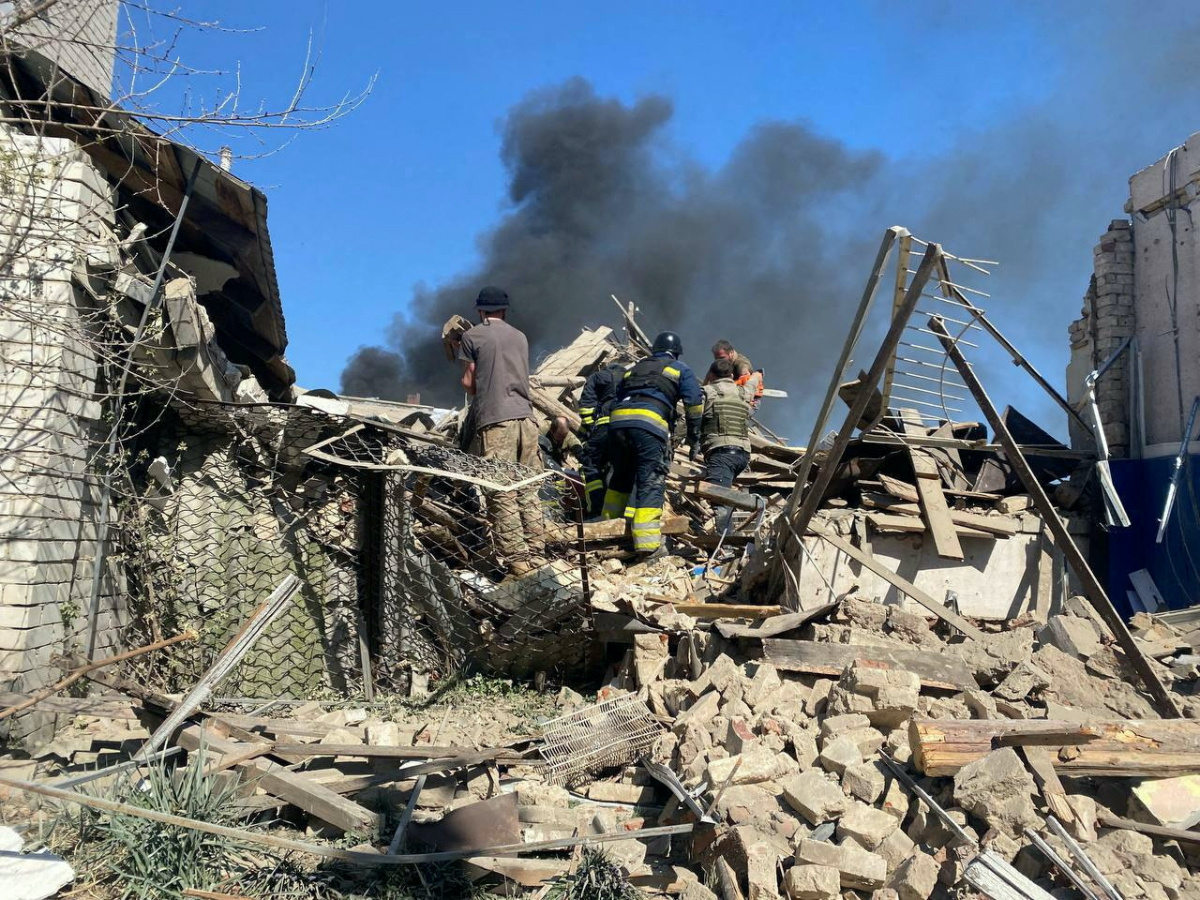
Rescuers and police work the site of a residential building destroyed during Russian air strikes, amid Russia’s attack on Ukraine, in the village of Lyptsi, Kharkiv region, Ukraine, on 10th April, 2024. PICTURE: Head of Kharkiv Regional-Military Administration Oleh Syniehubov via Telegram/Handout via Reuters
Velnychuk was shaken but suffered no major injuries from the guided bomb that landed outside her building on 27h March 27, blowing out all the windows along two rows of the red-brick residential buildings. But both she and her partner, who works as a courier, said they had no plans to leave the city.
“I always imagined I would grow up and have some kind of life, move from the village to the city, study. Now I live and…I don’t even know if I’ll wake up tomorrow morning,” said Velynchuk, a hairdresser.
“But, at the same time, you want to live in your own home. It’s normal to want to live where you were born.”
After months of attritional fighting, Russia is slowly advancing in Ukraine’s eastern region of Donetsk this year. Kyiv’s forces find themselves on the back foot, facing shortages of artillery shells and air defences, and grappling with manpower problems.
Ukraine’s parliament passed legislation on Thursday to overhaul how the armed forces draft civilians into the ranks, in an effort to bolster the frontlines. The final law, however, excluded clauses on draconian penalties for draft dodging that had caused public outcry.
We rely on our readers to fund Sight's work - become a financial supporter today!
For more information, head to our Subscriber's page.
Much would depend on how well the new law – expected to take effect in mid-May – was implemented, analysts said.
“There are two issues now: the ammunition issue and the manpower issue. If they address them, I think Ukraine can hold back Russian advances,” said Rob Lee, a senior fellow at the Foreign Policy Research Institute, a think tank in Philadelphia.
“But if they don’t get addressed, there is a potential that Russia will make greater gains this summer.”
Ukraine has tried to find a pressure point against Russia by bombing oil facilities far behind the front lines using long-range drones that have taken out 14 per cent of energy giant Russia’s oil refining capacity, according to Reuters calculations.
Zelenskiy, who inspected Ukrainian defensive fortifications in the Kharkiv region on Tuesday, has said Russia may be preparing a big offensive in late May or in June. He did not say where.
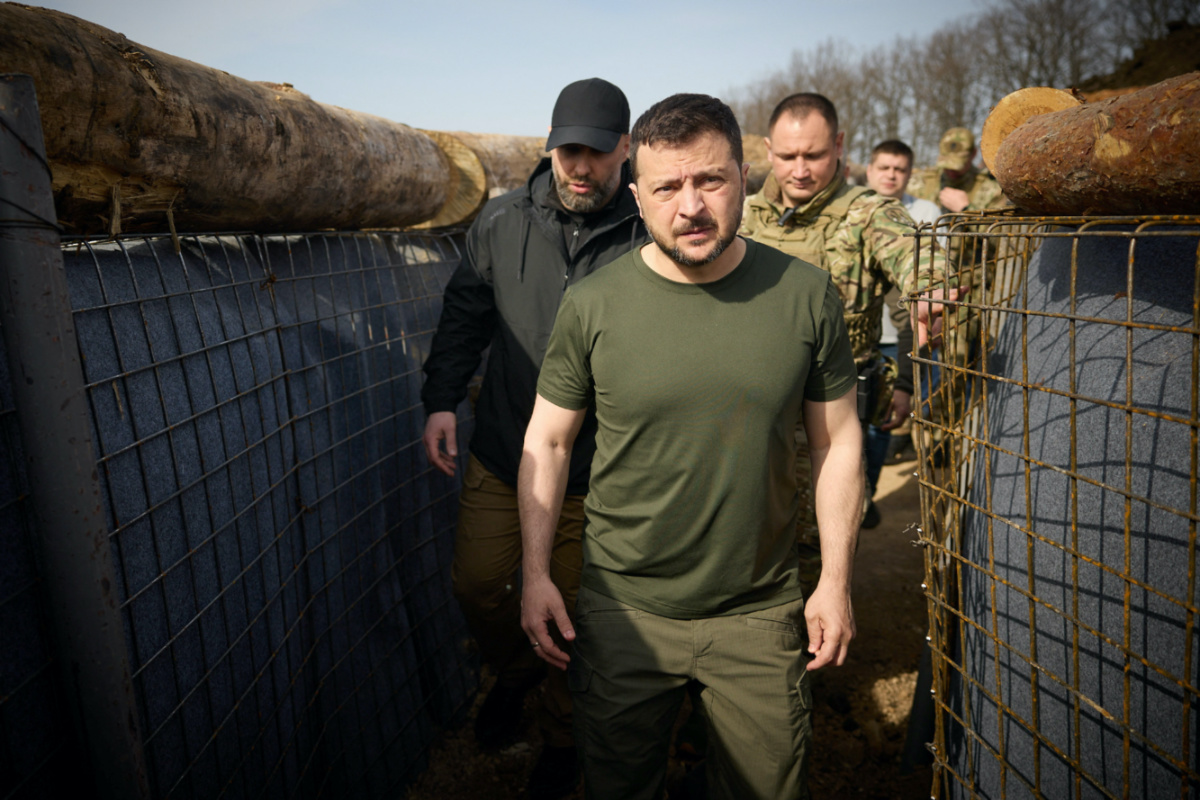
Ukraine’s President Volodymyr Zelenskiy inspects new fortifications for Ukrainian servicemen, amid Russia’s attack on Ukraine, near Russian border in Kharkiv region, Ukraine, on 9th April, 2024. PICTURE: Ukrainian Presidential Press Service/Handout via Reuters
Russia, which captured the eastern town of Avdiivka in February and controls 18 per cent of Ukrainian territory, has inched forward in the Donetsk region, keeping up pressure on the fronts west of Avdiivka and the city of Bakhmut.
Lee said Russia had fixed its own manpower problems and managed to recruit a large number of volunteers, allowing it to sustain losses in assaults, but that it faced equipment limitations that could become a problem next year.
Russia’s decision on where to attack, he said, would in part depend on where it thought Ukraine looked weakest, although Moscow would likely maintain its focus on the eastern Donbas region.
Putin said last month he did not rule out Russia trying to establish a buffer zone inside Ukrainian territory along the Russian border.
Oleksandr Kovalenko, an independent military analyst based in Odesa, said the strikes on Kharkiv looked aimed at setting in motion such a plan by trying to scare people to leave the city, laying the ground for a possible ground operation at a later date.
“For the moment, Russia does not have the forces and equipment to seize the city, but in the medium term they can terrorise the civilian population to prepare the corresponding conditions.”
Kharkiv, an industrial hub that once served as the capital of Soviet Ukraine, is a jarring contrast of 1.3 million people going about their lives amid regular air raid sirens and the sound of machine guns downing drones at night.
Schools in the city have been closed because of the threat of attacks and children study online. But authorities have opened underground classrooms in a metro station to allow some pupils to come to classes in person.
The city’s population plunged to 300,000 after the invasion but, after Ukraine recaptured occupied areas of the region in two military offensives in 2022, it returned to around 1.3 million, where it has remained since.
Viktoria Zaremba, 37, a web designer and mother of a 10-year-old boy, said more than two years of war had changed her perception of risk.
“There is no fear,” she said. She would only consider leaving Kharkiv if there were no central heating or electricity this winter, or a looming threat of occupation.
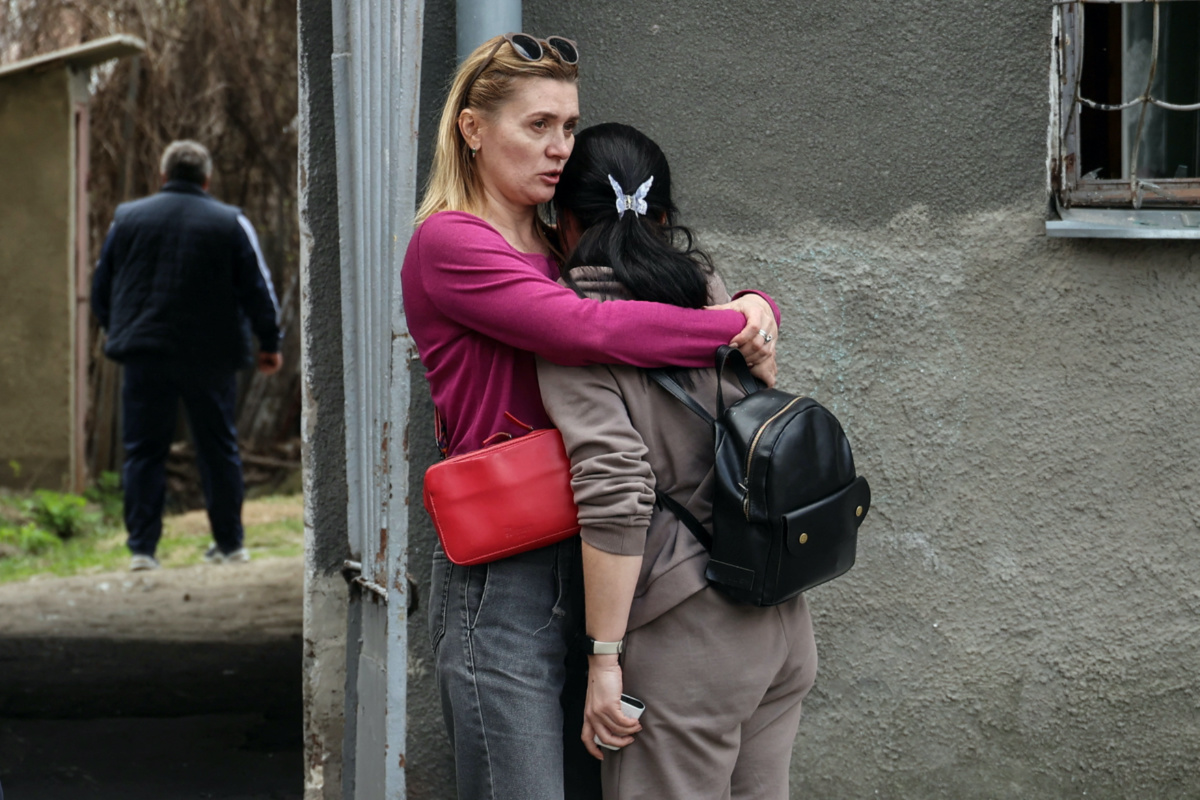
Local residents react at a site of a Russian air strike, amid Russia’s attack on Ukraine, in Kharkiv, Ukraine on 7th April, 2024. PICTURE: Reuters/Sofiia Gatilova
The number of attacks on the city and region began increasing in October, Filchakov said, rising more than 35 per cent in the first three months this year to 130 from 95 in the last quarter of 2023.
They have intensified again this month, he said.
Rolling blackouts last up to 12 hours a day and the traffic lights don’t work. Mobile coverage is patchy, online GPS maps don’t function properly, and the street lights stay off at night.
But Synehubov, the regional governor, said there was no sign people were abandoning the city.
“I’ll never leave,” said Borys Nosov, 63, a pensioner walking his dog in the city centre. Nosov said he was a veteran of the 1979-1989 Soviet-Afghan war.
“This is my city. How could I leave and abandon it? I served in Afghanistan. That was terrifying. I think everything will be okay.”
– Additional reporting by VITALII HNYDYI




